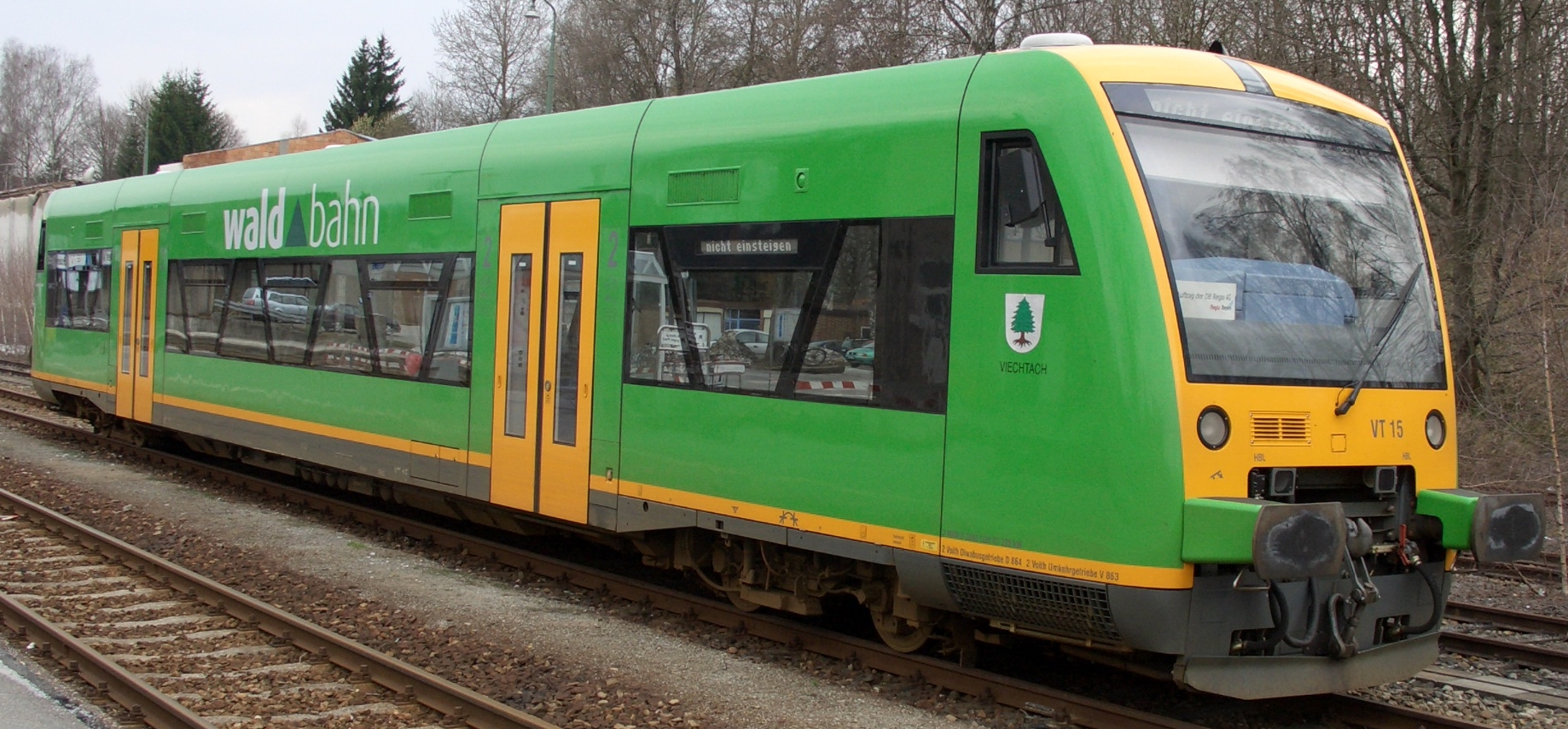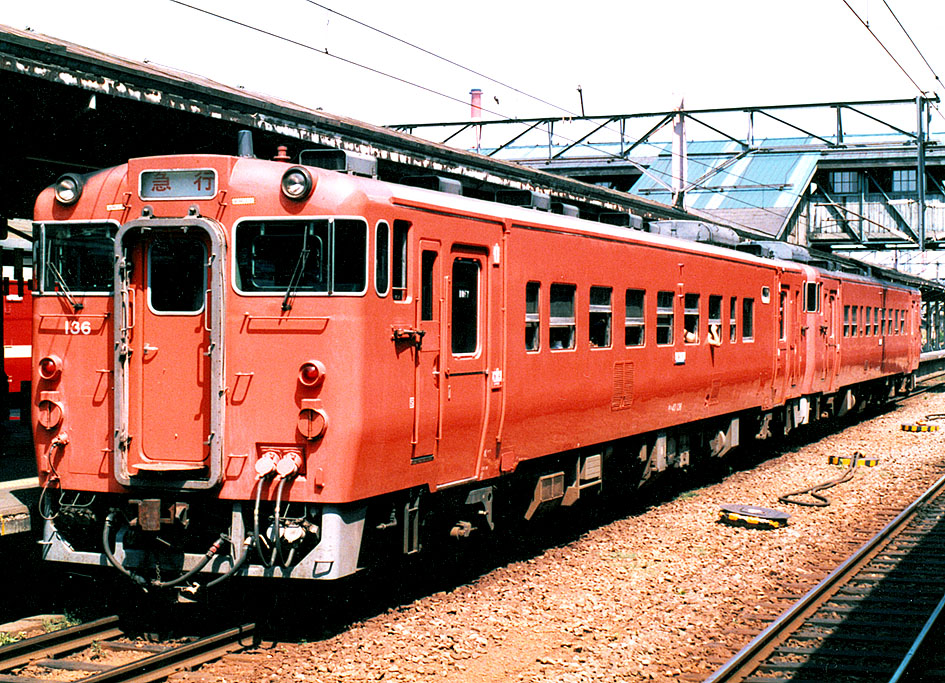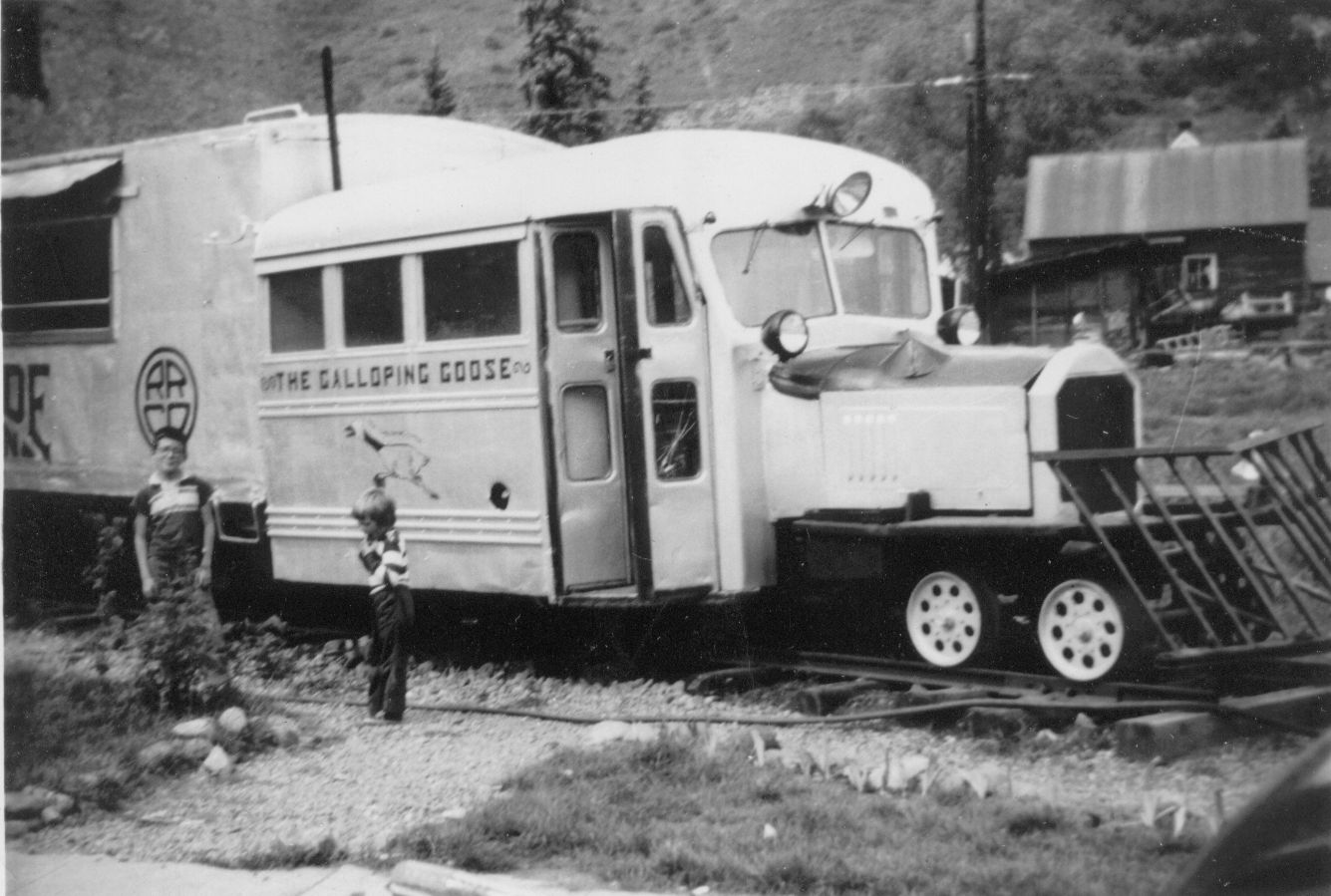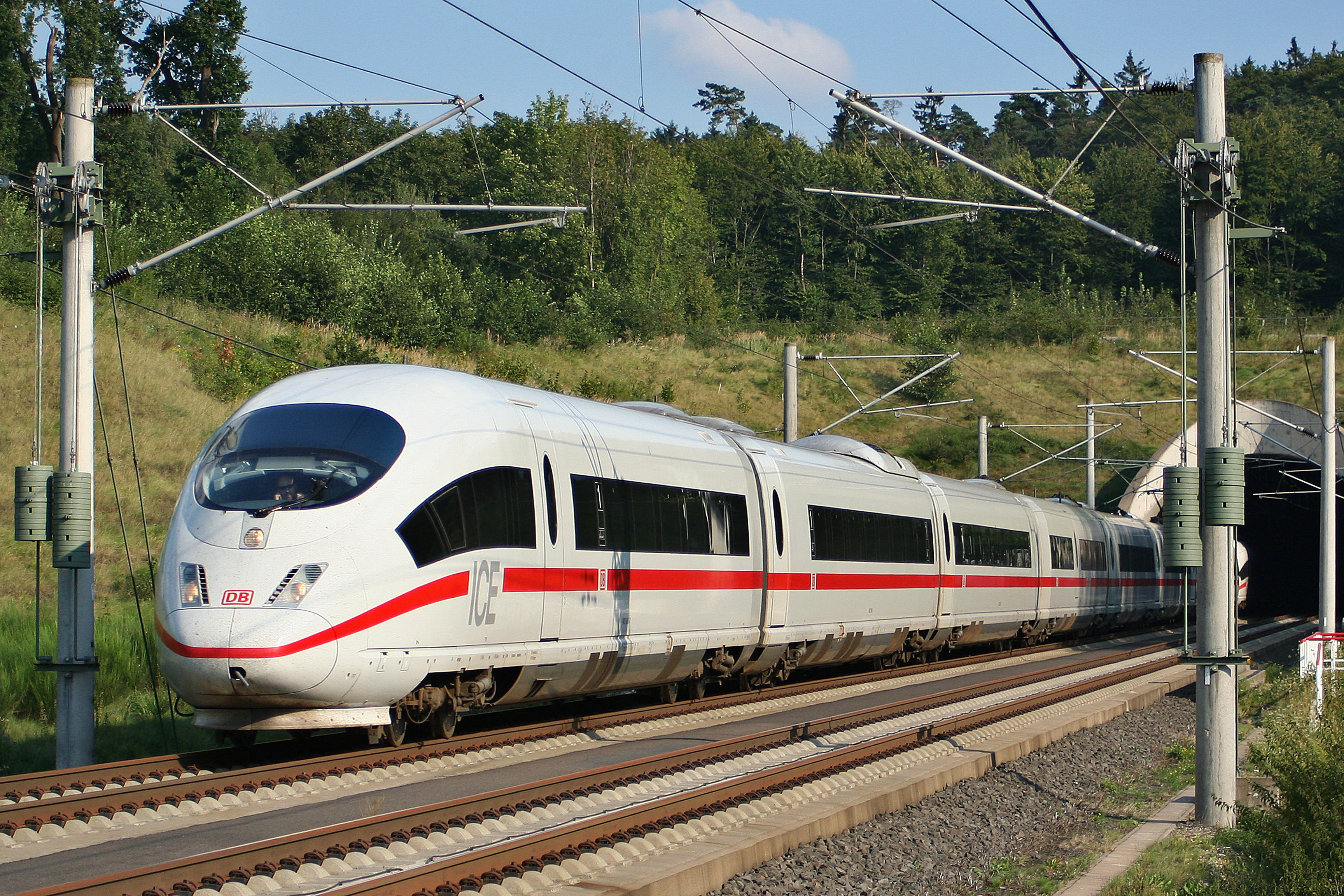|
Railcars
A railcar (not to be confused with the generic term railroad car, railroad car or railway car) is a self-propelled Rail transport, railway vehicle designed to transport passengers. The term "railcar" is usually used in reference to a train consisting of a single Coach (rail), coach (or carriage, car, unit), with a driver's cab at one or both ends. In its simplest form, a "railcar" may also be little more than a motorized Handcar, railway handcar, draisine or railbus. Some railway companies, such as the Great Western Railway, Great Western, termed such vehicles "railmotors" (or "rail motors"). Self-powered railcars were once common in North America; and termed Doodlebug (rail car), Doodlebugs. Self-propelled passenger vehicles also capable of hauling a train are, in technical rail usage, more usually called "rail motor coaches" or "motor cars" (not to be confused with the motor cars, otherwise known as automobiles, that operate on roads). Alternative use In Australia, t ... [...More Info...] [...Related Items...] OR: [Wikipedia] [Google] [Baidu] |
NZR RM Class (88 Seater)
The NZR RM class 88-Seaters were a class of railcar used in New Zealand. New Zealand Government Railways (NZR) classified them as RM (Rail Motor), the notation used for all railcars, numbering the 35 sets from RM100 to RM134. They were the most numerous railcars in NZR service. Their purchase and introduction saw the demise of steam-hauled provincial passenger trains and mixed trains, and was part of a deliberate effort to modernise NZR passenger services at a time of increasing competition from private motor vehicles. Being diesel powered and lighter the railcars were less expensive to operate and able to maintain quicker timetables, although they became plagued with mechanical and electrical problems, with a number of the classes eventually being turned into depowered locomotive-hauled carriages and reclassified as the AC class "Grassgrubs". Background In the early 1950s, NZR was in the process of replacing steam traction with diesel and modernising the railways to cope wit ... [...More Info...] [...Related Items...] OR: [Wikipedia] [Google] [Baidu] |
NZR RM Class (Silver Fern)
The NZR RM class Silver Fern was a class of rail motor Rail transport in New Zealand, in New Zealand. The three air-conditioned and sound-proofed 723-kW 96-seater diesel-electric twin-set railcars were built by Kawasaki Heavy Industries, Kawasaki under contract with Sojitz, Nissho Iwai of Japan. New Zealand Railways Department, New Zealand Railways (NZR) classified the railcars as RM (Rail Motor), the same as other railcars, using the ''Alsophila dealbata, Silver Ferns'' (a national symbol of New Zealand) because of their exterior was made of corrugated stainless steel, like the premier night sleeper train that also ran on the Wellington-Auckland (North Island Main Trunk) route, the Silver Star (NZR train), ''Silver Star''. The Silver Ferns replaced the three successful NZR RM class (88 seater)#Blue Streaks, ''Blue Streak'' railcars on the service. History The railcars are most well known for their service on the eponymous North Island Main Trunk daylight passenger train betwee ... [...More Info...] [...Related Items...] OR: [Wikipedia] [Google] [Baidu] |
Doodlebug (rail Car)
Doodlebug or hoodlebug is a nickname in the United States for a type of self-propelled railcar most commonly configured to carry both passengers and freight, often dedicated baggage, mail or express, as in a combine. The term has been used interchangeably with jitney. The name is said to have derived from the insect-like appearance of the units, as well as the slow speeds at which they would doddle or "doodle" down the tracks. Early models were usually powered by a gasoline engine, with either a mechanical drive train or a generator providing electricity to traction motors ("gas-electrics"). In later years, it was common for doodlebugs to be repowered with a diesel engine. Doodlebugs sometimes pulled an unpowered trailer car, but were more often used singly. They were popular with some railroads during the first part of the 20th century to provide passenger and mail service on lightly used branch lines at less expense than with a train consisting of a locomotive and coaches ... [...More Info...] [...Related Items...] OR: [Wikipedia] [Google] [Baidu] |
Diesel Multiple Unit
A diesel multiple unit or DMU is a multiple-unit train powered by on-board diesel engines. A DMU requires no separate locomotive, as the engines are incorporated into one or more of the carriages. Diesel-powered single-unit railcars are also generally classed as DMUs. Diesel-powered units may be further classified by their transmission type: diesel–mechanical DMMU, diesel–hydraulic DHMU, or diesel–electric DEMU. Design The diesel engine may be located above the frame in an engine bay or under the floor. Driving controls can be at both ends, on one end, or in a separate car. Types by transmission DMUs are usually classified by the method of transmitting motive power to their wheels. Diesel–mechanical In a diesel–mechanical multiple unit (DMMU), the rotating energy of the engine is transmitted via a Transmission (mechanics), gearbox and driveshaft directly to the wheels of the train, like a automobile, car. The transmissions can be shifted manually by the driver, a ... [...More Info...] [...Related Items...] OR: [Wikipedia] [Google] [Baidu] |
Railmotor
Railmotor is a term used in the United Kingdom, Ireland and the Commonwealth for a railway lightweight railcar, usually consisting of a railway carriage with a steam traction unit, or a diesel or petrol engine, integrated into it. Steam railcars Overview In the earliest days of railways, designers wished to produce a vehicle for passenger carrying that was economical to build and operate on routes where passenger numbers were light. A single coach with its own prime mover was a solution adopted in some cases; this may be thought of as the predecessor to the railcar, a term more associated with the use of internal combustion engines. William Bridges Adams started building railmotors in small numbers as early as 1848. The Bristol and Exeter Railway used a steam carriage. In most cases the early designs were unsuccessful technically, but in the early years of the twentieth century, street-running passenger tramways started to use small steam engines to draw tramcars, replacing ... [...More Info...] [...Related Items...] OR: [Wikipedia] [Google] [Baidu] |
Great Western Railway
The Great Western Railway (GWR) was a History of rail transport in Great Britain, British railway company that linked London with the southwest, west and West Midlands (region), West Midlands of England and most of Wales. It was founded in 1833, received its enabling act of Parliament on 31 August 1835 and ran its first trains in 1838 with the initial route completed between London and Bristol in 1841. It was engineered by Isambard Kingdom Brunel, who chose a broad gauge of —later slightly widened to —but, from 1854, a series of Consolidation (business), amalgamations saw it also operate Standard gauge, standard-gauge trains; the last broad-gauge services were operated in 1892. The GWR was the only company to keep its identity through the Railways Act 1921, which amalgamated it with the remaining independent railways within its territory, and it was finally merged at the end of 1947 when it was Nationalization, nationalised and became the Western Region of British Railways. ... [...More Info...] [...Related Items...] OR: [Wikipedia] [Google] [Baidu] |
Railbus
A railbus is a lightweight passenger railcar with an automotive engine. It shares many aspects of its construction with a bus, typically having a bus (original or modified) body and four wheels (2 axles) on a fixed base instead of on bogies. Originally designed and developed during the 1930s, railbuses have evolved into larger dimensions with characteristics similar in appearance to a light railcar, with the terms ''railcar'' and ''railbus'' often used interchangeably. Railbuses designed for use specifically on little-used railway lines were commonly employed in countries such as Germany, Italy, France, the United Kingdom, and Sweden. Today, railbuses are being replaced by modern, light Railcar#New-generation DMU and EMU railcars, DMU railcar designs. Modern diesel-electric railcars, which can be run coupled as multiple units, like the Stadler RS1, the RegioSprinter of Siemens, or the successor Siemens Desiro, share the role and specifications with railbuses (albeit with improv ... [...More Info...] [...Related Items...] OR: [Wikipedia] [Google] [Baidu] |
Rio Grande Southern Railroad
The Rio Grande Southern Railroad (reporting mark RGS, also referred to as "The Southern") was a 3 ft gauge railways, 3 ft (914 mm) Narrow gauge railways, narrow-gauge railroad which ran in the southwestern region of the United States, US state of Colorado, from the towns of Durango, Colorado, Durango to Ridgway, Colorado, Ridgway, routed via Lizard Head Pass. Built by German immigrant and Colorado toll road builder Otto Mears, the RGS operated from 1891 through 1951 and was built with the intent to transport immense amounts of silver mineral traffic that were being produced by the mining communities of Rico, Colorado, Rico and Telluride, Colorado, Telluride. On both ends of the railroad, there were interchanges with The Denver and Rio Grande Railroad (reporting mark D&RG(W), later known as the Denver and Rio Grande Western), which would ship the traffic the RGS hauled elsewhere like the The Durango smelter, San Juan Smelter in Durango. For the first few years of its life, t ... [...More Info...] [...Related Items...] OR: [Wikipedia] [Google] [Baidu] |
Train
A train (from Old French , from Latin">-4; we might wonder whether there's a point at which it's appropriate to talk of the beginnings of French, that is, when it wa ... , from Latin , "to pull, to draw") is a series of connected vehicles that run along a railway track and Passenger train, transport people or Rail freight transport, freight. Trains are typically pulled or pushed by locomotives (often known simply as "engines"), though some are self-propelled, such as multiple units or railcars. Passengers and cargo are carried in railroad cars, also known as wagons or carriages. Trains are designed to a certain gauge, or distance between rails. Most trains operate on steel tracks with steel wheels, the low friction of which makes them more efficient than other forms of transport. Many countries use rail transport. Trains have their roots in wagonways, which used railway tracks and were powered by horses or pulled by cables. Following the invention of the steam locomo ... [...More Info...] [...Related Items...] OR: [Wikipedia] [Google] [Baidu] |
North Island Main Trunk
The North Island Main Trunk (NIMT) is the main railway line in the North Island of New Zealand, connecting the capital city Wellington with the country's largest city, Auckland. The line is long, built to the New Zealand rail gauge of and serves the large cities of Palmerston North and Hamilton, New Zealand, Hamilton. Most of the NIMT is Single track (rail), single track with frequent passing loops, but sections at each end that also handle suburban commuter traffic are double tracked: * The section known as the North-South Junction between Wellington railway station, Wellington and Waikanae railway station, Waikanae, except for of single-track through tunnels between North Junction ( from Wellington) and South Junction, ( from Wellington), on the Pukerua Bay railway station, Pukerua Bay to Paekakariki railway station, Paekākāriki section, * between Hamilton and Te Kauwhata railway station, Te Kauwhata (except for the single-track Waikato River Bridge at Ngāruawāhia rai ... [...More Info...] [...Related Items...] OR: [Wikipedia] [Google] [Baidu] |
Galloping Goose (railcar)
Galloping Goose is the popular name given to a series of seven railcars (officially designated as "motors" by the railroad), built in the 1930s by the Rio Grande Southern Railroad (RGS) and operated until the end of service on the line in the early 1950s. They were derived from full-sized automobiles. Originally running steam locomotives on narrow gauge railways, the perpetually struggling RGS developed the first of the "geese" as a way to keep its contract to run mail into towns in the Rocky Mountains in Colorado. There was not enough passenger or cargo income to justify continuing the expensive steam train service at then-current levels, but it was believed that a downsized railway would return to profitability. The steam trains would transport heavy cargo and peak passenger loads, but motors would handle lighter loads. Motors were not only less expensive to operate, but were also significantly lighter, thus reducing impact on the rails and roadbeds. This cost saving meant ... [...More Info...] [...Related Items...] OR: [Wikipedia] [Google] [Baidu] |
Multiple Unit
A multiple-unit train (or multiple unit (MU)) is a self-propelled train composed of one or more Coach (rail), carriages joined, and where one or more of the carriages have the means of propulsion built in. By contrast, a locomotive-hauled train has all of the carriages unpowered. An implication of this is that all the powered carriages needs to be controllable by a single engineer or driver, which is a case of the broader concept of multiple-unit train control. In other words, all "multiple units" employ some variation of multiple-unit train control. In the broader context "unit" means any powered rail vehicle, including locomotives (that does not carry cargo) and powered cargo-carrying carriages. In the context of this article, "unit" refers specifically to the latter only (whether the cargo is passengers or some other cargo). What follows is that if coupled to another multiple unit, all MUs can still be controlled by the single driver, with multiple-unit train control. ... [...More Info...] [...Related Items...] OR: [Wikipedia] [Google] [Baidu] |









